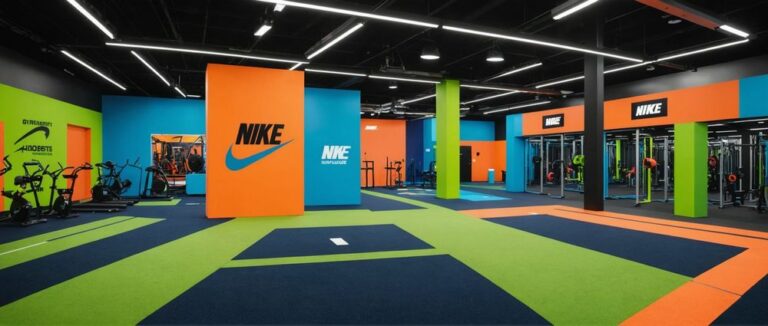Are you tired of spending your ad budget on Facebook ads that simply don’t deliver? Understanding what makes a Facebook ad successful can be a game-changer for your business. In this article, we’ll explore some prime examples of Facebook ads that actually work and delve into the reasons behind their effectiveness.
1. Eye-Catching Visuals

One of the most engaging aspects of successful Facebook ads is their use of eye-catching visuals. Studies show that posts with images produce 650% higher engagement than text-only posts. The visuals not only capture attention but also convey the message in a more immediate and impactful way. Graphic design, vibrant colors, and clear imagery can all contribute to the success of an ad.
For example, a fashion retailer using a high-quality image of a trending outfit will likely attract more clicks than one using a simple text description. The visual appeal creates an instant connection, making users more inclined to engage with the ad. Furthermore, videos have proven to be highly effective, as they combine visuals with motion and sound to make the message even more compelling.
User-Generated Content
Leveraging user-generated content (UGC) can also enhance the effectiveness of your Facebook ads. When potential customers see real people using and enjoying your products, it builds trust and creates a sense of authenticity. User-generated photos, testimonials, and unboxing videos can provide a credible and relatable appeal that professionally crafted ads often lack.
Consider a beauty brand running an ad featuring a customer reviewing their latest skincare product. The relatability factor instantly increases, making viewers more likely to trust the review and make a purchase. This also encourages other customers to share their experiences, creating a loop of continuous content generation.
2. Compelling Copy and Clear Call to Action (CTA)
The copy in your Facebook ad needs to be compelling and concise to keep the viewer’s attention. A strong headline that addresses a pain point or poses a question can draw users in. Once hooked, a clear and concise message describing the benefits of your product or service can keep them engaged.
Equally important is the Call to Action (CTA). A clear and direct CTA encourages users to take the next step, whether it’s “Shop Now”, “Learn More”, or “Sign Up Today”. Ads with vague or no CTA often fail because users don’t know what action to take after viewing the ad. Ensure your CTA is compelling and stands out visually to increase the likelihood of user engagement.
3. Targeted Audience

Effective Facebook ads are those that are targeted to the right audience. Facebook’s advanced targeting features allow you to specify your audience based on demographics, interests, behavior, and even past interactions with your business. By narrowing down your audience, you can ensure that your ad reaches people who are more likely to be interested in what you have to offer.
For instance, if you are promoting a fitness tracker, targeting health enthusiasts, gym-goers, and people interested in fitness-related content will yield better results than a broad, untargeted approach. This targeted strategy ensures that your ad spend is used efficiently, reaching those who are most likely to convert into customers.
4. Social Proof
Social proof is another powerful element that contributes to the success of Facebook ads. This includes elements like customer reviews, ratings, and mentions of your brand in reputable sources. Social proof builds credibility and trust, making users more inclined to trust and engage with your ad.
For example, an ad featuring a testimonial from a well-known figure in your industry can be incredibly effective. Or, displaying the number of customers who have purchased or recommended your product can also serve as persuasive evidence of its value. Leveraging this kind of social validation can significantly enhance the perceived trustworthiness and effectiveness of your ad.
5. Retargeting Campaigns
Retargeting campaigns are a strategic way to re-engage users who have previously interacted with your brand but didn’t convert. By targeting users who have visited your website or added items to their cart but haven’t made a purchase, you can remind them about your products and encourage them to complete the purchase.
Retargeting ads typically have higher conversion rates since the audience is already familiar with your brand. Adding a sense of urgency, such as limited-time offers or exclusive discounts, can further entice users to take action. This targeted approach helps to recover potential lost sales and maximize the return on your ad spend.
Conclusion
In closing, creating effective Facebook ads requires a combination of engaging visuals, compelling copy, targeted audience, social proof, and strategic retargeting. By studying successful examples and understanding the elements that make them work, you can significantly enhance the performance of your own Facebook ad campaigns. Leveraging these insights can help you make the most of your advertising budget and achieve better results for your business.
FAQ
1. What types of visuals work best for Facebook ads?
High-quality images, engaging videos, and graphic designs with vibrant colors tend to work best. The goal is to capture the viewer’s attention quickly and convey your message effectively.
2. How do I write a compelling Facebook ad copy?
Focus on crafting a strong headline that addresses a pain point or asks a question. Keep your message clear and concise, highlighting the benefits of your product or service. End with a strong Call to Action (CTA) that prompts the user to take the next step.
3. How important is audience targeting in Facebook ads?
Audience targeting is crucial for the success of Facebook ads. By specifying demographics, interests, and behaviors, you can ensure your ads reach the people who are most likely to be interested in your product, thus improving your ad’s effectiveness.
4. What is social proof, and why is it important?
Social proof is any form of validation from customers, industry experts, or reputable sources that demonstrates the value of your product. It builds trust and credibility, making users more likely to engage with your ad.
5. What are retargeting campaigns, and how do they work?
Retargeting campaigns aim to re-engage users who previously interacted with your brand but didn’t convert. By targeting these individuals with specific ads, you remind them of your products and encourage them to complete their purchase, typically resulting in higher conversion rates.




